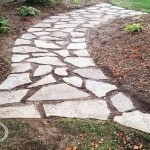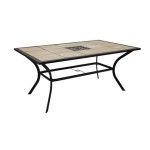Extend Concrete Patio With Pavers: Essential Considerations
Enhancing your outdoor living space by extending your concrete patio with pavers can add value and functionality to your property. However, undertaking such a project requires careful planning and execution to ensure a durable and aesthetically pleasing outcome. Here are several essential aspects to consider while extending a concrete patio with pavers:
1. Site Preparation and Excavation
Thorough site preparation is crucial for a stable and lasting patio extension. The area where the pavers will be installed must be properly excavated to create a level base that slopes away from the house for drainage. Ensure that the soil is compacted and any existing vegetation or debris is removed.
2. Concrete Base Installation
A solid concrete base is essential for supporting the pavers and preventing shifting or sinking. The concrete base should be at least 4 inches thick and poured over a layer of crushed gravel or compacted soil. Reinforcing the concrete with steel rebar rods is recommended for added strength.
3. Paver Selection and Layout
Choosing the right pavers for your patio extension is essential for both aesthetics and durability. Consider factors such as material (concrete, clay, or natural stone), size, shape, and color. Plan the paver layout carefully to create a visually appealing pattern and ensure proper drainage.
4. Mortar or Adhesive Setting
After laying out the pavers, they must be secured in place using either mortar or adhesive. Mortar is a traditional method, but it requires more skill and time to apply. Adhesives are more user-friendly and offer quicker installation. Choose a setting material that is compatible with the pavers and local climate conditions.
5. Grouting and Sealing
After the pavers are set, the joints between them must be filled with grout or polymeric sand. Grout provides strength and stability, while polymeric sand allows for some flexibility and prevents weeds from growing. Once the grout or sand is set, the patio should be sealed to protect it from stains, moisture, and UV rays.
6. Drainage and Slope
Proper drainage is essential for preventing water from pooling on the patio and causing damage to the underlying structure. Ensure that the patio slopes away from the house to redirect water runoff. Consider installing a drainage system, such as a French drain, to handle excess water.
Conclusion
Extending a concrete patio with pavers requires careful planning and attention to detail. By considering these essential aspects, including site preparation, concrete base installation, paver selection, proper setting, grouting and sealing, drainage, and slope, you can ensure a durable, attractive, and functional outdoor living space that will enhance your home's value for years to come.

Diy Extending Concrete Patio With Pavers Paver Small Garden Seating Area

Xenia Paver Patio Extension Stones Concrete

Landscape Pavers Great Hardscape For Pool Decks Patios

Adding Pavers To Extend Existing Patio Google Search Concrete Designs Blocks

Patio Contractor Decorative Concrete Paver 918 Outdoor Tulsa Builder

Diy Concrete Patio In 8 Easy Steps How To Pour A Cement Slab

Revealing A Creative Diy Patio Extension With Pavers Designed Decor

Patio Extension Ideas How To Extend A Concrete Network

Diy Paver Patio Backyard Project Old Salt Farm

See The Many Choices That A Paver Patio Offers For Outdoor Living








